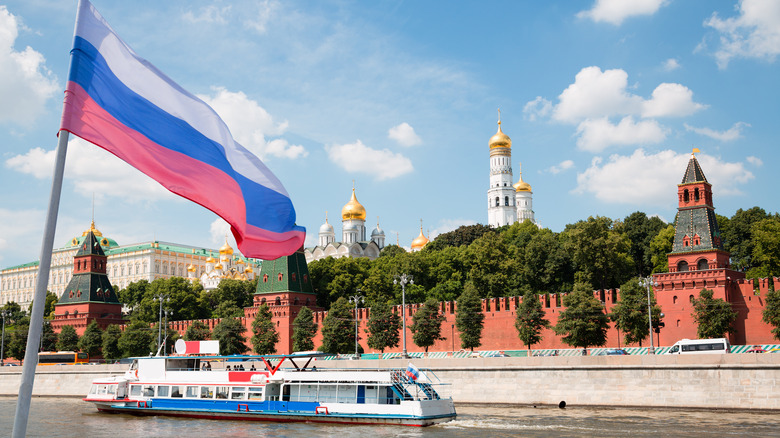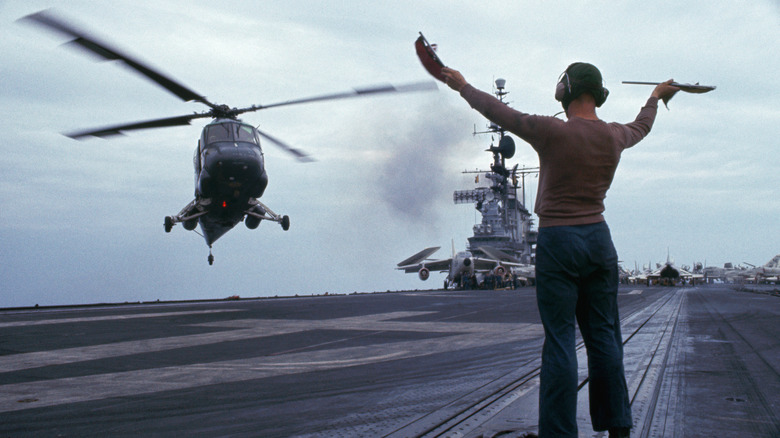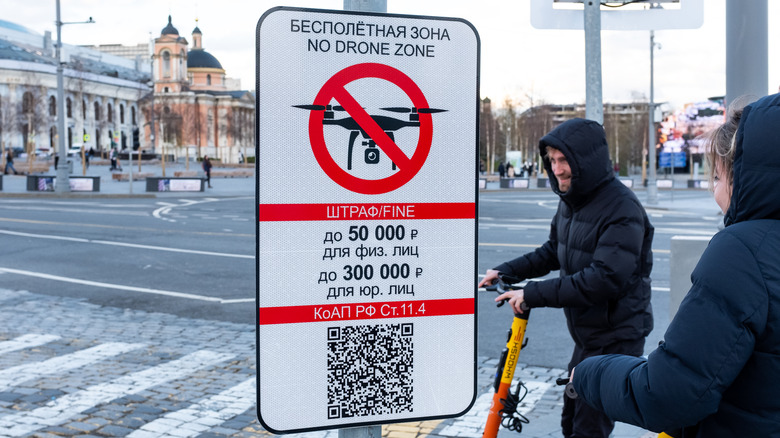What Is A False Flag Event And How Are They Used?
In May 2023, a strange turn of events in the Russian invasion of Ukraine involved a supposed drone strike on Moscow's Kremlin Senate in Ivanovskaya Square, the state residence of Vladimir Putin. Footage on CNN shows the drone being shot down by Russian anti-aircraft weaponry. At first, Russian authorities blamed Ukraine, to which Ukrainian President Volodymyr Zelensky replied (per The Hill), "We don't attack Putin or Moscow; we fight on our territory." Then, Kremlin's spokesperson Dmitry Peskov blamed the U.S., saying (per The Guardian), "Washington is definitely behind this attack." But there's also the possibility that Russia itself is the one behind the whole thing. If so, the attack would be what's called a "false flag" event.
The idea of a false flag event is nothing complicated or new. Simply put, it's a staged, fake event meant to justify a political or military response. In the 20th and 21st centuries alone we've got numerous, documented, historical, out-in-the-open records of false flag events conducted by Nazi Germany, the United States, Pakistan, and Russia, as the BBC outlines. In the case of the current drone strike — called a "planned terrorist attack" by Russian authorities, per CNBC — the Kremlin said, "Russia reserves the right to take countermeasures, wherever and whenever it deems appropriate." This is the precise goal of a false flag event.
A common, historical tactic
It's easy — far too easy — for talk of false flag events to turn conspiratorial. These are the exact types of conspiracies that have cropped up around the 9/11 attacks on the World Trade Center and the U.S.' subsequent invasions throughout the Middle East, as Independent Australia outlines. That being said, we know of a whole host of substantiated false flag throughout history, and it's reasonable to assume that the tactic spans back as long as humanity has killed its neighbors.
Britannica says that the term "false flag" first appears in texts in the 16th century in the midst of the Protestant Reformation. The term was used to denote attempts to discredit the Catholic church by calling out the hypocrisy of Catholics caught in very un-Catholic acts. By the 18th century the term came to be used to refer to "deception at sea," i.e., raising a friendly flag to lure an enemy within firing range.
As The Telegraph says, the entirety of World War II began with a false flag event. Seven Nazi soldiers dressed as Poles attacked their own radio tower at Gleiwitz (now Gliwice) and then got on the radio and declared that the tower was successfully in Polish hands. They even dumped a body dressed like a Polish soldier outside the station. This happened on August 31, the day before Germany invaded Poland on September 1 and officially kicked off World War II.
Tonkin, Manchuria, Crimea, and more
Six days before the Ukraine-Russia war began on February 24, 2022, U.S. President Joe Biden made a public statement about reported Russian false flag events in Ukraine. As The White House cites, Biden described "reports of a major uptick in violations of the ceasefire by Russian-backed fighters attempting to provoke Ukraine in the Donbas." This included the bombing of a Ukrainian kindergarten that Russia claimed was carried out by Ukraine itself.
Before that, however, Russia employed false flag events to seize Ukrainian Crimea in 2014. Back then, as the BBC and Brookings Institution reports, troops in anonymous green uniforms — "little green men" — popped up overnight in Ukrainian Crimea at various strategic junctions. On March 4 Vladimir Putin feigned ignorance and described them as "local self-defense units." On March 18 he admitted they were Russian troops. On March 28 he congratulated them for conquering Crimea.
Other false flags are numerous and well-documented. The U.S., for instance, faked the Vietnamese torpedoing of American destroyers in the Gulf of Tonkin in 1964 to justify the Vietnamese War, as The New York Times describes. Before this, in 1931, Japan planted explosives on their own South Manchuria Railway to justify invading Mongolia, per the Hoover Institution. In 1939, the Soviet Union bombed its own territory and blamed it on Finland as an excuse to start the Russo-Finnish War. On and on it goes. Knowledge of such tactics helps create an informed, educated public better able to evaluate events.


